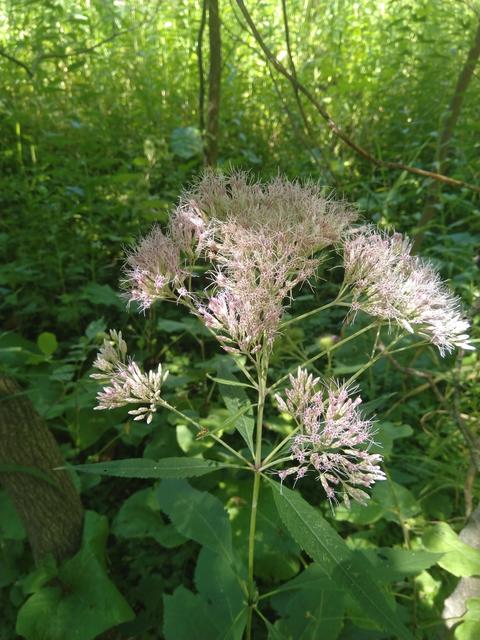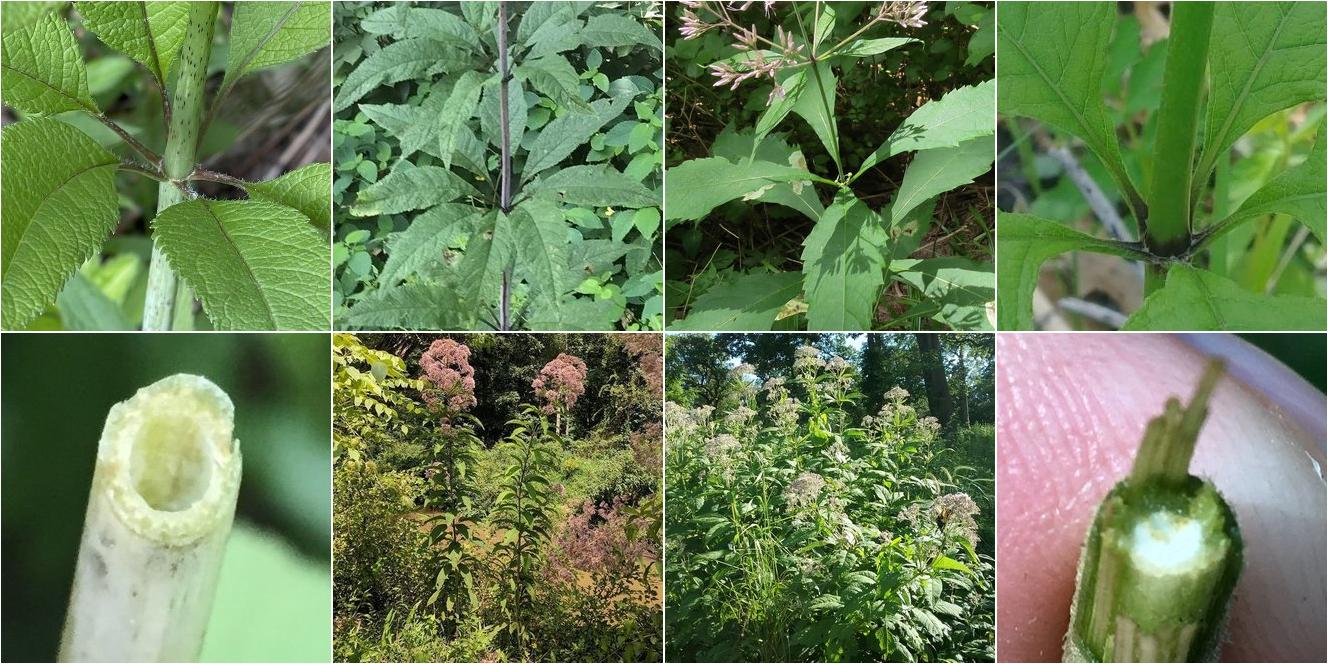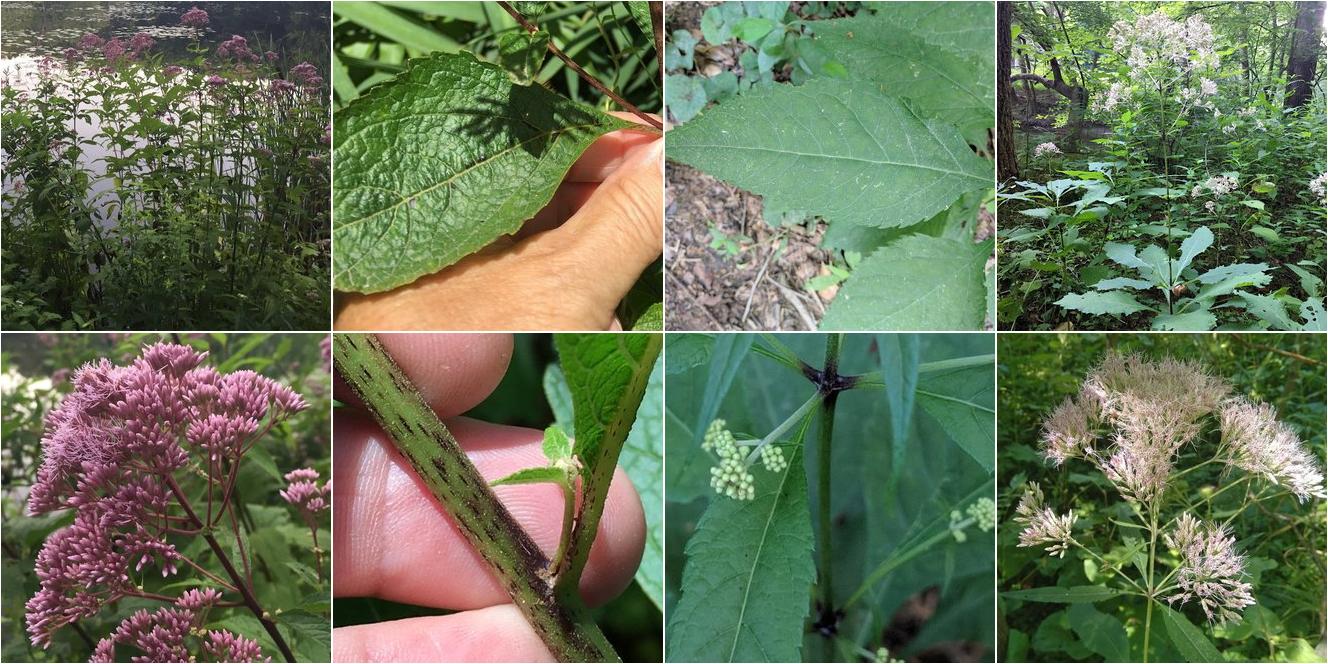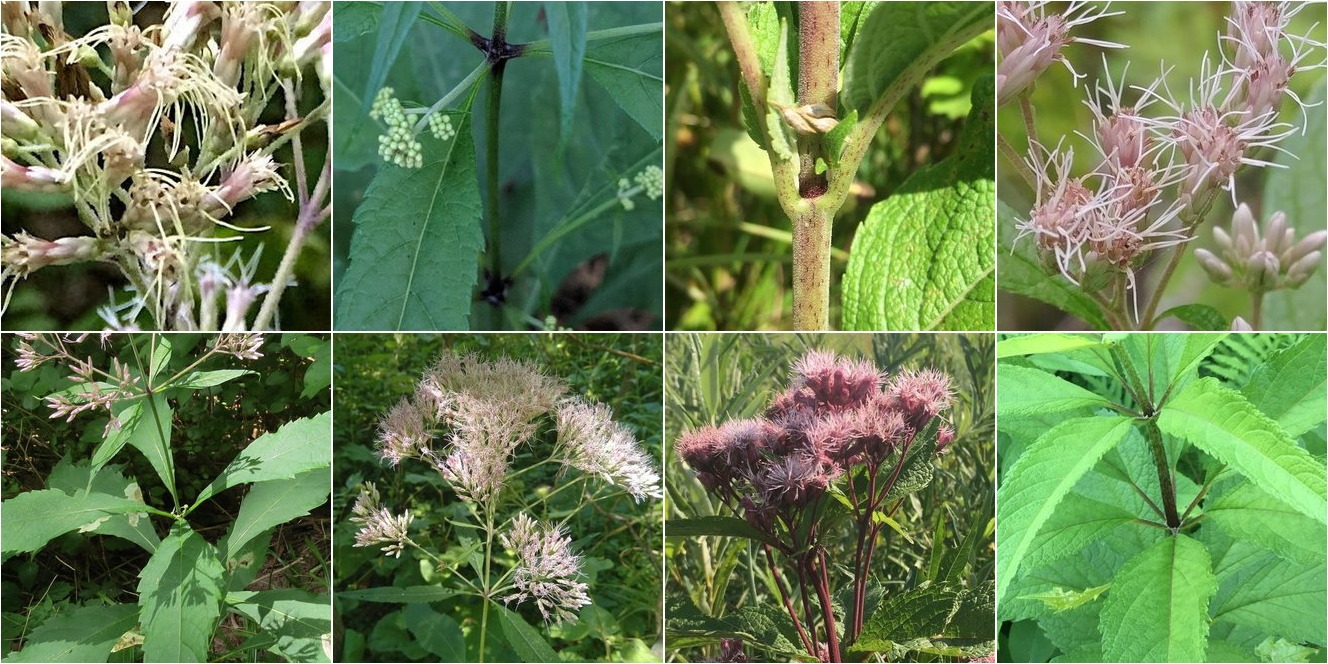Hollow Joe Pye Weed (Eutrochium fistulosum) vs. Sweetscented Joe Pye Weed (Eutrochium purpureum)
Updated September 11th, 2024These species are frequently confused where their ranges overlap in the eastern and lower Midwestern U.S. Although they can occur relatively near each other on the same site, they have mostly non-overlapping habitat preferences. They can usually be distinguished by characteristics of their stem, and often also by their height, inflorescence shape, and number of leaves per whorl. E. purpureum ranges farther north and northwest, and occurs in drier, shadier, better-drained habitats. E. fistulosum ranges farther south and prefers moister, sunnier, more disturbed habitats, and is more tolerant of flooding and waterlogged soils.






